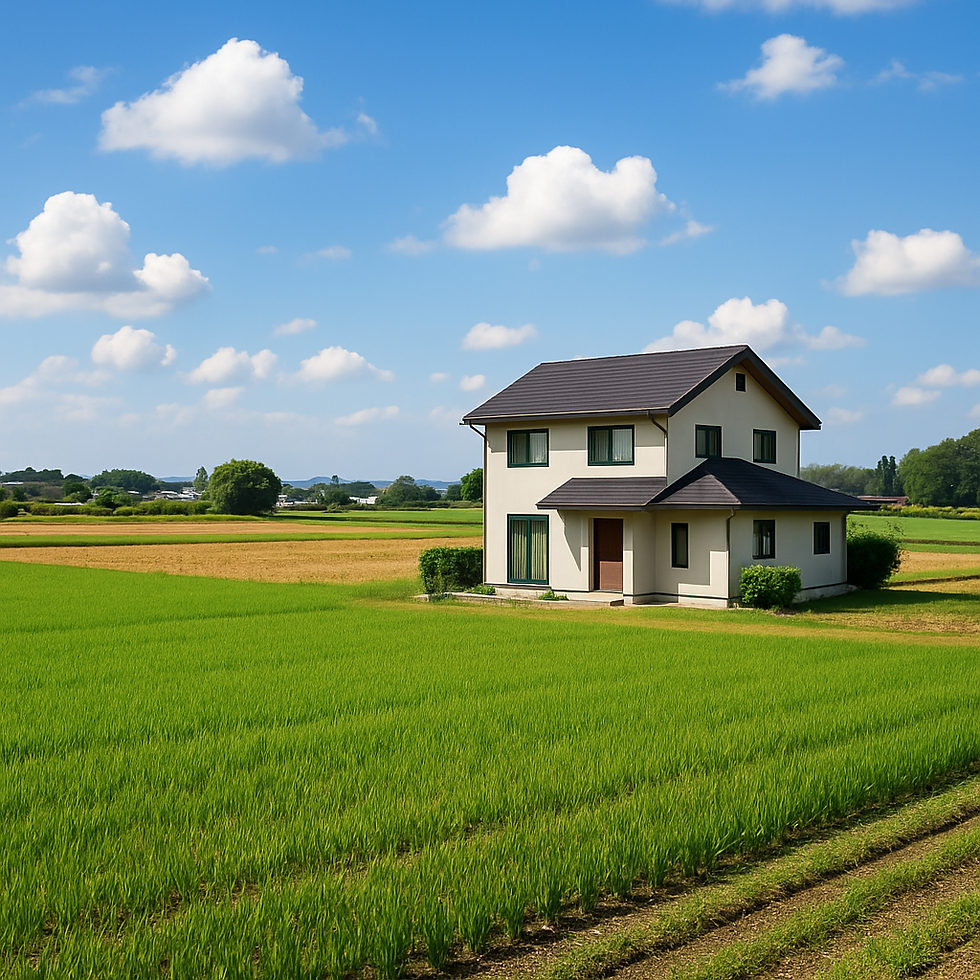The Farmland Conversion Process and Required Documents
- 大輔 安江
- Jul 18
- 2 min read

Hello, I’m Daisuke Yasue, an Administrative Procedures Legal Specialist. Today, I’d like to explain the step-by-step process of farmland conversion and the necessary documents involved. If you're wondering “Where do I start?” or “What do I need to prepare?”, this guide is for you.
◆Overview of the Farmland Conversion Process
The general steps for farmland conversion are as follows:
1. Field Survey and Land Use Check
First, check whether the land in question is registered as “farmland” in the official registry. Then, visit the site to inspect current usage, terrain, drainage, and road access.
2. Check Zoning and Planning Restrictions
Next, determine whether the land is in an urbanized area, urbanization control area, or agricultural promotion zone. This will affect whether the procedure is a notification or a permit, and greatly influences difficulty.(Note: For agricultural promotion zones, you may need to file a "request for exclusion" before applying for conversion.)
3. Advance Consultation with Authorities
Contact the Agricultural Committee or the municipal planning department to confirm whether your plan is appropriate and feasible.
4. Preparation of Application Documents
Gather and prepare the required maps, forms, and supplementary documents (details listed below).
5. Submission to Agricultural Committee or Prefecture
Each municipality has a monthly deadline. Missing the deadline typically means your application is delayed to the next month.
6. Review, On-site Inspection, and Approval
The authorities will review your case and usually conduct a field inspection.Approval typically takes several weeks to several months depending on the complexity.
◆Example of Required Documents (for Article 5 Applications)
If you're transferring farmland to another person who plans to use it for non-agricultural purposes (e.g., selling it to a developer for a parking lot), you’ll likely need the following:
Farmland Act Article 5 Permit Application Form
Location map, site plan, and copy of the cadastral map
Land registry certificate
Survey map or land plot diagram
Site development plan (layout, floor plans, etc.)
Statement of intended use or project overview
Seal certificates (inkan shomeisho) from both seller and buyer
Copy of the sales or lease agreement
Depending on the land’s classification and location (especially in urbanization control areas or promotion zones), additional documentation or separate procedures may be required.
◆Conclusion
Farmland conversion requires not just paperwork, but also expert judgment based on zoning laws, land registry data, and municipal policies. If an application is rejected or delayed, it can result in lost time, money, and business opportunities.
At our office, we support farmland conversion cases—especially in Saku City and the surrounding areas—from preliminary checks to application submission. If you're wondering, “Does this land qualify?” or “Where should I start?”, don’t hesitate to reach out for a consultation.




Comments